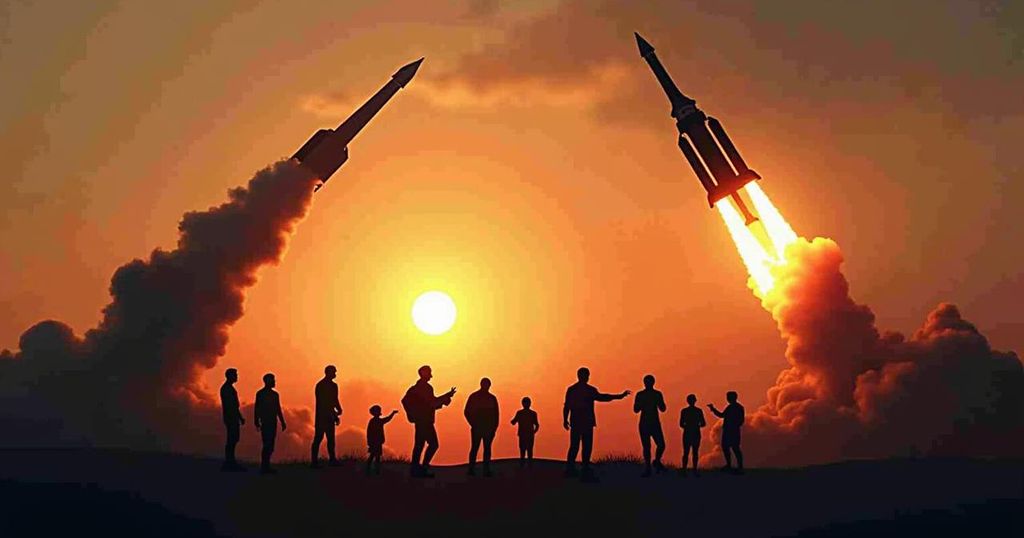Timeline: Key Events Leading to Iran’s Missile Attacks on Israel

The timeline of escalating conflicts between Israel and Iran highlights key events leading to recent missile attacks, including exchanges of fire between Hezbollah and Israel, Iranian retaliation, and the humanitarian impact of military actions. The failure of diplomatic initiatives and the complicity of international powers, particularly the United States, have contributed to the ongoing violence.
In the past year, tensions in the Middle East have escalated significantly, culminating in Iran’s missile attacks on Israel that have sparked fears of a broader conflict. The recent exchange of threats and aggression between Israel and Iran points to the deepening crisis stemming from ongoing violence in Gaza and the complex interplay of regional alliances. On October 8, 2023, the animosity surged as Hezbollah and Israel commenced cross-border firings immediately following Hamas’s significant attack on Israel, which resulted in substantial casualties. The ensuing conflict in Gaza has devastated Palestinian communities, leading to over 41,000 deaths, primarily of civilians, including women and children. The situation intensified further with a wave of Iranian missile strikes targeting Israel on April 13, 2024, a direct response to the Israeli attack on an Iranian diplomatic compound in Damascus, which took the lives of numerous personnel including a high-ranking commander of the IRGC. The Iranian offensive marked a pivotal moment, as it represented the first instance of Iran launching direct missile attacks against Israeli territory. The assassination of Hamas leader Ismail Haniyeh by Israeli forces on July 31, 2024, exacerbated tensions, with Iranian leaders promising dire consequences. By September 2024, Israel’s aggressive campaign, which killed more than 700 individuals in Lebanon within four days, further inflamed the situation, driving Hezbollah to retaliate, culminating in widespread displacement of Lebanese civilians. Analysts have noted that the escalation could have been mitigated had there been a more proactive approach toward a ceasefire, particularly on behalf of the United States. The failure to hold Israel accountable for its military actions has arguably contributed to the ongoing cycle of violence, underscoring the precarious nature of regional politics in the Middle East.
The complex dynamics between Israel and Iran have come to a boiling point, with a backdrop steeped in historical grievances, military engagements, and evolving geopolitical alliances. The recent hostilities can be traced back to a series of events beginning with the attacks from Hamas, followed by Israeli military responses, retaliatory actions by Hezbollah, and escalated military engagements across borders. This ongoing strife reflects the broader implications of international interventions, particularly those from the United States, which have influenced regional power balances and conflicts.
The present situation reflects a critical juncture in the Israeli-Iranian conflict, with heightened military actions leading to significant civilian suffering. The failure of diplomatic efforts and the overwhelming military focus on escalation instead of resolution has resulted in a humanitarian crisis. The cycle of violence, exemplified through a series of retaliatory strikes, has created a precarious environment where calls for accountability and peaceful measures remain urgent yet unaddressed.
Original Source: www.aljazeera.com








